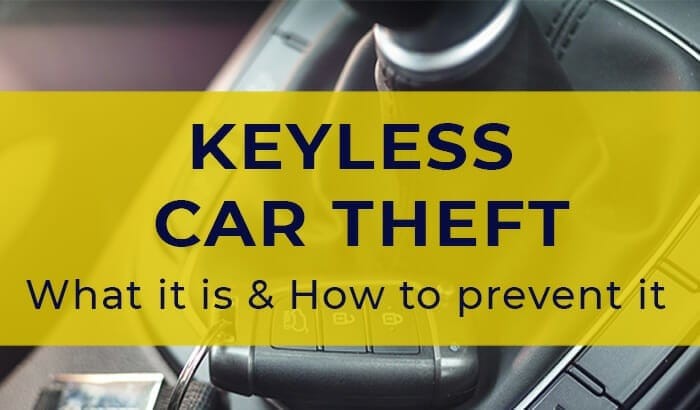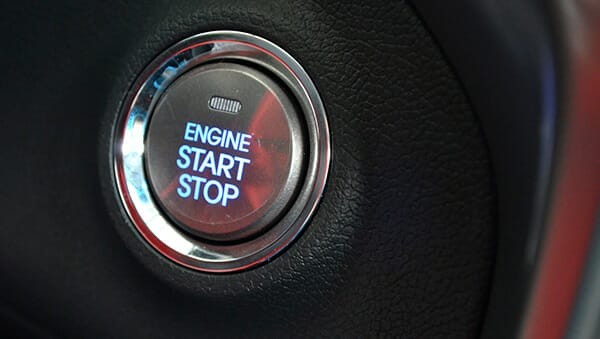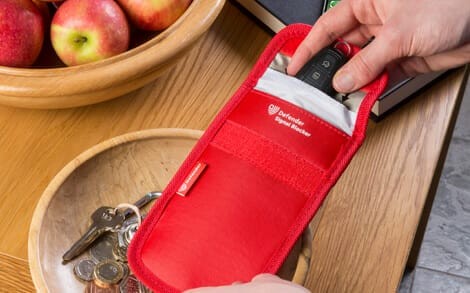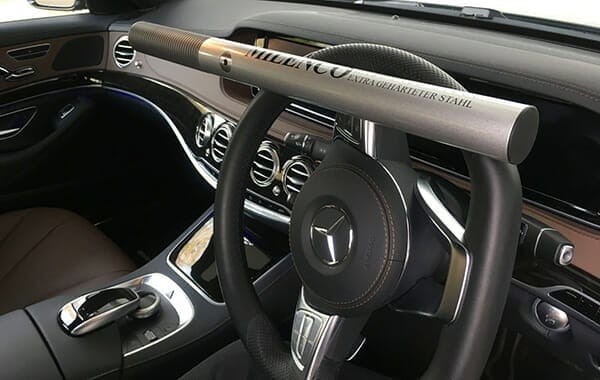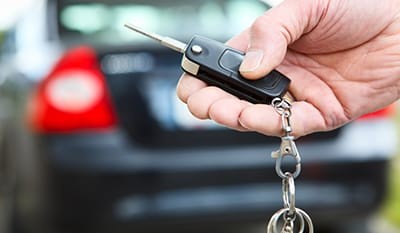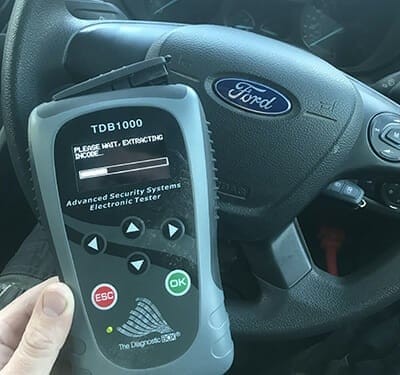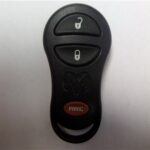Keyless car theft, also known as relay attack or relay crime, is a growing concern for vehicle owners. Modern car key fobs, while convenient, can be vulnerable to sophisticated hacking techniques. Criminals are increasingly using electronic devices to exploit keyless entry systems, allowing them to steal cars in mere seconds. Understanding how these attacks work and taking proactive steps to protect your car key fob is crucial in safeguarding your vehicle. This guide will provide you with essential knowledge and actionable strategies on How To Protect Your Car Key Fob From Hackers and prevent keyless car theft.
Understanding Keyless Car Theft (Relay Attacks)
Keyless car theft, often referred to as relay theft or relay crime, targets vehicles equipped with keyless entry systems. Hackers exploit the technology that allows you to unlock and start your car without physically using a key. Instead, they use signal amplification devices to trick your car into thinking your key fob is nearby, even when it’s safely inside your home.
How Keyless Car Theft Works:
The process of keyless car theft is surprisingly quick and efficient, often taking less than 30 seconds. It typically involves two individuals working in tandem:
Step 1: A thief uses a relay device near your home, capable of capturing the radio signal emitted by your car key fob.
Step 2: This captured signal is then relayed to an accomplice standing near your car with another device.
Step 3: The device near your car mimics the signal from your key fob, fooling your car’s system into believing the legitimate key is present. This allows the thieves to unlock the doors, start the ignition, and drive away.
Visual representation of keyless car theft prevention methods
Speed of Attack:
One of the alarming aspects of keyless car theft is its speed. The entire process, from signal capture to driving off, can take as little as 20 to 30 seconds. This speed and stealth make it difficult to detect or prevent in real-time without proper precautions.
Devices Used:
Thieves utilize specialized electronic equipment, commonly known as relay devices or signal amplifiers, to carry out these attacks. These devices are designed to intercept, amplify, and retransmit the radio frequency signals emitted by keyless car fobs.
Is Your Car at Risk? Keyless Entry Systems Explained
Determining if your car is vulnerable to keyless car theft is straightforward. The crucial factor is whether your vehicle has a keyless entry system.
Keyless Entry vs. Remote Entry:
It’s important to distinguish between keyless entry and standard remote entry.
- Keyless Entry: Allows you to unlock, enter, and start your car without pressing any buttons on your key fob. As long as the fob is within a certain range of the car (often in your pocket or bag), the car will detect it. Starting the engine usually involves pressing a button on the dashboard.
- Remote Entry: Requires you to press a button on your key fob to unlock the doors. You typically need to physically insert a key into the ignition to start the car. Cars with only remote entry systems are not susceptible to relay attacks.
Check Your Car:
If you can unlock and start your car without physically using a key or pressing buttons on the fob (beyond starting the engine once inside), your car likely has a keyless entry system and is potentially at risk of relay theft.
Keyless car entry system ignition button in a modern vehicle
Top Methods to Protect Your Car Key Fob from Hackers
Protecting your car key fob from hackers and preventing keyless car theft requires a combination of practical methods. Here are effective strategies you can implement:
1. Use a Faraday Bag (Signal Blocking Pouch)
The most effective and widely recommended method to protect your key fob is using a Faraday bag, also known as a signal blocking pouch.
How Faraday Bags Work:
Faraday bags are lined with metallic materials that create a屏蔽 effect, blocking electromagnetic fields and radio waves. When you place your key fob inside a Faraday bag, it becomes isolated from external signals, preventing hackers from capturing its signal.
Benefits of Faraday Bags:
- Highly Effective: Provides a reliable barrier against signal interception.
- Simple to Use: Just place your keys inside the pouch when you are at home or in any potentially vulnerable location.
- Affordable: Faraday bags are relatively inexpensive and readily available online or at auto accessory stores.
Cost: High-quality Faraday bags can be purchased for as little as £5 to £20, making them a cost-effective security measure.
A car key fob securely placed inside a signal blocking Faraday pouch
2. Disable Keyless Fob Wireless Signal (Sleep Mode)
Some modern key fobs offer the option to disable the wireless signal when not in use, effectively putting the fob into a “sleep mode.”
How to Disable the Signal:
- Check Your Car Manual: Consult your vehicle’s owner’s manual to see if this feature is available and how to activate it.
- Contact Manufacturer: If you cannot find information in the manual, contact your car manufacturer’s customer service or your local dealership for guidance.
By deactivating the signal, you prevent thieves from being able to capture and relay it, even if they are near your key fob.
3. Employ Physical Security Measures
While electronic protection is essential, physical security devices can act as strong deterrents and add layers of protection against car theft.
Steering Wheel Locks:
Steering wheel locks are mechanical devices that physically lock the steering wheel, making it impossible to steer the car. Their visible presence can deter thieves, as they add time and effort to the theft process.
Car Alarms:
Car alarms, especially those with loud sirens and immobilizers, can scare away potential thieves and alert you and your neighbors to a break-in attempt.
Certified Security Products:
When choosing security devices, look for products with third-party approvals like “Sold Secure.” This certification indicates that the product has been tested against common theft tools and meets certain security standards.
Insurance Benefits:
Installing a car alarm, especially a professionally fitted and approved system, may also lead to a reduction in your car insurance premiums. Check with your insurance provider to see if they offer discounts for enhanced security measures.
A brightly colored steering wheel lock fitted to a car steering wheel for security
4. Secure Parking Practices
Where and how you park your car can significantly impact its vulnerability to keyless car theft.
Garage Parking:
Parking your car in a garage overnight is the ideal solution. It creates a physical barrier and increases the distance between your car and potential thieves trying to intercept key fob signals.
Defensive Driveway Parking:
If you don’t have a garage, park your car on your driveway as close to your house as possible. This reduces accessibility for thieves and increases the risk of detection.
Home Security Upgrades:
Consider enhancing your overall home security to deter car theft:
- Motion Detector Lighting: Install outdoor motion-activated lights to illuminate your driveway and surrounding areas, making it less appealing for thieves to operate unnoticed.
- CCTV Cameras: Install security cameras to monitor your driveway and car. Visible cameras can deter criminals, and recorded footage can be valuable evidence if theft occurs.
5. VIN Etching for Vehicle Identity Protection
VIN (Vehicle Identification Number) etching involves permanently etching your car’s VIN or registration number onto the windows and sometimes headlights and mirrors.
Deterrent Effect:
VIN etching makes it significantly harder for thieves to resell stolen vehicles. Changing the identity of an etched car is a complex and time-consuming process, acting as a strong deterrent.
6. Maintain a Tidy Vehicle Interior
While not directly related to key fob hacking, keeping your car’s interior tidy can reduce the risk of theft in general.
Hide Valuables:
Avoid leaving valuable items, such as smartphones, laptops, or GPS devices, in plain sight inside your car. Hide them in the glove compartment or trunk.
Empty Glove Box:
Consider leaving your glove box open to show potential thieves that there is nothing of value inside, reducing the incentive to break in.
Remove Suction Cup Marks:
Wipe away any suction cup marks left by GPS devices on your windshield. These marks can indicate the presence of valuable electronics, even if they are not currently visible.
7. Secure Lost Car Keys
Losing your car keys can create a security vulnerability. If you lose your keys, take immediate action:
Contact an Auto Locksmith:
Contact a Master Locksmith Association (MLA) licensed auto locksmith. They are experts in vehicle security and can help reprogram your car’s immobilizer system.
Key Reprogramming:
A qualified locksmith can reprogram your car’s system to ensure that only your current set of keys will work, rendering any lost or potentially stolen keys useless.
A locksmith specializing in auto services assisting with lost car keys
8. Reprogram Used Car Keys
If you purchase a second-hand vehicle, there is a risk that previous owners may still have keys that can access your car.
Reprogram Keys After Purchase:
To ensure your security, it’s advisable to reprogram the car keys when you buy a used car. This will invalidate any keys held by previous owners, giving you peace of mind.
Cost Considerations:
Be aware that car key reprogramming can be expensive, especially if you go directly to the car manufacturer. Using a licensed auto locksmith is often a more cost-effective option.
Car key programming process to enhance vehicle security and prevent theft
Car Models Vulnerable to Keyless Theft
While any car with a keyless entry system is potentially vulnerable to relay theft, some models have been identified as being particularly at risk. Popular models often targeted include:
- Ford Fiesta
- Volkswagen Golf
- Nissan Qashqai
- Ford Focus
Studies, such as those conducted by the General German Automobile Club (ADAC), have shown that a significant number of keyless cars are susceptible to relay attacks. Thatcham Research, a UK-based automotive research center, has also conducted security ratings for keyless entry cars.
Thatcham Keyless Car Security Ratings (2019):
PASSED Keyless Car Theft Test (Superior Security Rating):
| Keyless Entry Vehicle Model | Pass Or Fail | Security Rating |
|---|---|---|
| Audi e-tron | Pass | Superior |
| BMW 1 Series / 7 Series / 8 Series | Pass | Superior |
| BMW X6 / X7 | Pass | Superior |
| Ford Puma | Pass | Superior |
| Jaguar XE | Pass | Superior |
| Land Rover Evoque | Pass | Superior |
| Mercedes B-Class | Pass | Superior |
| Porsche 911 | Pass | Superior |
| Porsche Macan | Pass | Superior |
| Volkswagen Passat | Pass | Superior |
FAILED Keyless Car Theft Test (Poor Security Rating):
| Keyless Entry Vehicle Model | Pass Or Fail | Security Rating |
|---|---|---|
| DS3 Crossback | Fail | Poor |
| Ford Mondeo | Fail | Poor |
| Kia ProCeed | Fail | Poor |
| Lexus UX | Fail | Poor |
| Hyundai Nexo | Fail | Poor |
| Mazda 3 | Fail | Poor |
| Toyota Corolla | Fail | Poor |
| Toyota RAV-4 | Fail | Poor |
| Volvo V60 | Fail | Poor |
Keyless Car Theft FAQs
Does putting car keys in a tin block the signal?
Storing your key fob in a metallic tin may offer some signal blocking capability. Metal can act as a Faraday cage to some extent. However, the effectiveness can vary depending on the type and thickness of the metal, and if the container is fully enclosed. For reliable signal blocking, a purpose-designed Faraday bag is recommended. If using a tin, test it thoroughly to ensure it effectively blocks the signal from your fob. Place your fob in the tin, go to your car, and check if you can still unlock it. If it unlocks, the tin is not providing sufficient protection.
Where should I keep my car keys at night?
The safest place to keep your key fob at night, especially for keyless entry cars, is inside a Faraday bag. Store the pouch away from doors and windows and ideally further inside your home, maximizing the distance from potential signal interception attempts.
Will My Car Insurance Cover Keyless Car theft?
Most comprehensive car insurance policies do cover theft, including cases of keyless car theft. However, insurance providers may require proof that you still possess all sets of keys for the stolen vehicle. It is always advisable to check the specifics of your car insurance policy to understand the coverage details and any requirements in case of theft.
Are Car Manufacturers doing anything to Prevent Keyless Car Theft?
Yes, car manufacturers are increasingly taking steps to address keyless car theft vulnerabilities. Some measures include:
- Faraday Bags from Manufacturers: Some manufacturers, like Kia, are providing Faraday bags with new keyless entry vehicles.
- Motion Sensor Key Fobs: Manufacturers such as Ford (for models like Focus and Puma), BMW, Audi, and Mercedes have introduced motion sensor fobs. These fobs automatically enter a sleep mode after a period of inactivity (e.g., 40 seconds), ceasing signal transmission and preventing signal relay attacks when the fob is stationary.
Are Vans also at threat to Keyless Theft?
Yes, vans are also vulnerable to keyless theft. Reports have indicated a rise in keyless van thefts, with models like the Ford Transit being particularly targeted. Van owners should also take preventative measures to protect their vehicles from relay attacks.
What is the future of Relay theft?
Law enforcement agencies and car manufacturers are working to combat relay theft. Police are collaborating with manufacturers to push for enhanced security measures in keyless systems. In the meantime, preventative measures like using Faraday bags remain crucial for car owners to protect their vehicles.
Have a Question about Keyless Car theft?
If you have further concerns or questions about keyless car theft and how to protect your vehicle, please contact us or consult with a licensed car locksmith in your area for expert advice.
Contact us about keyless car theft
Find nearest car locksmith for advice
